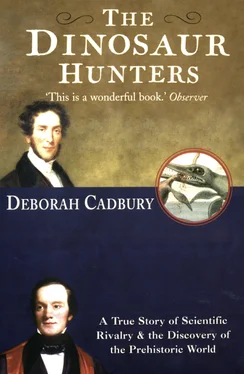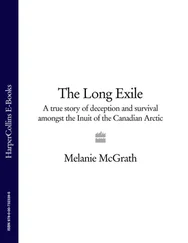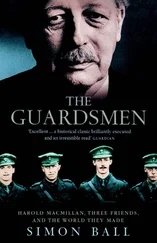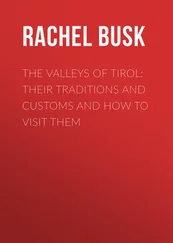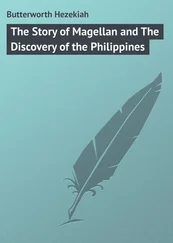As Napoleon’s army swept across Europe, spoils from museums and private collections were frequently sent back to Paris. Fossils were also retrieved from the plaster quarries around Paris, and during the course of building canals around the city. The new Muséum National d’Histoire Naturelle, established by the Republicans in place of the Jardin du Roi, rapidly became the envy of the world. Cuvier began to apply his extensive knowledge of the anatomy of living creatures to try to interpret fossil skeletons with a view to understanding the ancient forms of life.
Georges Cuvier believed that fundamental laws must govern the anatomy of creatures as surely as the laws established by Newton now governed physics. If a creature was a carnivore, Cuvier observed, all of its organs would be designed for this purpose. The forelimbs would be strong enough to grasp prey; the hind-limbs muscular and mobile, for hunting; the teeth would be sharp, capable of ripping meat; the jaw would have sufficient muscular support for the animal to tear prey; and the digestive organs would be adapted for carnivorous food. In effect, Cuvier’s principle of ‘correlation of parts’ showed that all the organs and limbs of a creature are interdependent and must function together for that creature to survive. He rapidly acquired a brilliant reputation. From a single fossil bone, he declared, he could deduce the class of the beast – whether it was a mammal, reptile or bird – and ascertain subordinate divisions: the order, family, genus (plural: genera), and perhaps even the very species to which the fossil animal belonged.
‘Let us not search further for the mythological animals,’ said Cuvier. ‘The mantichore or destroyer of men which carries a human head on a lion’s body terminating in a scorpion’s tail, or the guardian of treasures, the Griffin, half eagle–half lion … Nature could not combine such impossible features.’ The teeth and jaws of a lion, for example, could only belong to a creature that possessed the other attributes of a powerful carnivore, a muscular frame and skeleton that would confer enormous strength. The Sphinx of Thebes, the Pegasus of Thessaly, the Minotaur of Crete, mermaids – those half-women half-fish that lured sailors to their death with the sweetness of their song – were all myths that crumbled under Cuvier’s scientific scrutiny. ‘These fantastic compositions may be recovered among ruins,’ he said, ‘but they certainly do not represent real beings.’ Instead, Georges Cuvier offered a real past, conjuring up a vivid picture of creatures that had once roamed the surface of the earth.
Less than two years after his arrival in Paris, in January 1796, the twenty-seven-year-old naturalist made his debut at the National Institute of Sciences and Arts. His talk ‘On the species of living and fossil elephants’ pointed to an astonishing conclusion.
Following French victories in Holland, a private collection of fossil ‘elephants’ at the Hague had been seized and sent to Paris. Cuvier had compared these fossils from Holland to the bones of present-day elephants from India and Africa. As he studied the characteristics of the teeth and jaw he realised that the fossil ‘elephant’ differed in the shape and proportions of the jaw from either of the two living species. On the basis of these differences, he argued, the fossil ‘elephant’ should be classified as a separate species. The distribution of the fossil bones also differed; unlike the Indian or African elephant, the fossil species was never found in the tropics. He gave the fossil elephant a special name in recognition of its differences: the ‘mammoth’.
Since mammoths differed from any living elephants, reasoned Cuvier, this species was now extinct. The discovery, soon after this, of the first preserved mammoth in the permafrost of Siberia lent weight to his ideas. Cuvier believed the snowy wastes of Northern Europe and Siberia had once been inhabited by these enormous woolly beasts, which had somehow mysteriously perished. And he went on to show that other large fossil mammals, apart from the mammoth, had thrived on the ancient globe. He identified ‘Megatherium’ , or ‘huge beast’, a creature resembling a giant sloth and covered in fur like a bear, which could stand on two legs to graze on leaves. An elephantine creature whose fossils combined the teeth of a hippopotamus with the huge tusks of a mammoth was named by Cuvier a ‘mastodon’.
Cuvier’s large extinct mammals, the mammoth, the mastodon and Megatherium, were found in the most recent, Tertiary deposits. In older strata Cuvier identified an ancient sea lizard, ‘Mosasaurus’ or ‘lizard of the Meuse’, and several extinct species of crocodile. His studies suggested that entire animal races had been wiped from the face of the earth. He was haunted by the desire to know what had happened to the vanished creatures. Why would God create these beings if He planned only to destroy them? Cuvier wanted to ascertain whether ‘species which existed then have been entirely destroyed, or if they have merely been modified in their form, or if they have simply been transported from one climate into another’. Quite why and how extinction occurred was a puzzle that remained to be solved.
William Buckland was impressed by Cuvier’s discoveries and eager to learn from his approach, comparing fossil animals to living creatures so as to work out their zoological affinities. He discussed Mary Anning’s unknown creature with his friend the Reverend Conybeare, who wanted to make a definitive scientific study of the giant beast. Mary’s ‘crocodile’ possessed such a puzzling blend of characteristics that it was hard to classify. The long, pointed snout was similar to a dolphin’s or porpoise’s. The teeth were more like those of a crocodile, with sharp, conical fangs, each one ridged all around the enamel. The vertebrae were slender, like the backbone of a fish. It was baffling.
To compound their problems, England did not have a centre of anatomical excellence comparable to the magnificent collections under Cuvier’s supervision in Paris. Consequently, Buckland tried to establish a correspondence with Cuvier, ‘founded on an exchange of fossil specimens’, and hoped to benefit from the French expertise.
It was to Lyme that the Reverends Buckland and Conybeare went in search of fossil ‘crocodiles’ as gifts for Cuvier, and in particular to the collection of Mary Anning.
Mary and her mother had established a ‘tiny, old curiosity shop close to the beach’. According to one visitor, ‘the most remarkable petrifactions and fossil remains … were exhibited in the window’. Inside, the little shop and adjoining chamber were ‘crammed with ammonites, heads of “crocodiles”, and boxes of shells’. To Mary’s skills as a collector, Buckland acknowledged, he felt greatly indebted, for she continued to supply more specimens of her unknown creature. Cuvier was interested to see the latest discoveries from England, and soon Buckland established a correspondence with a young assistant in Cuvier’s department, Joseph Pentland. Pentland acted as liaison between Cuvier and the English team, organising shipments of casts and providing information on fossils.
But while Buckland and his colleagues were approaching Georges Cuvier, another London gentleman, Sir Everard Home, raced into print with the first published account of Mary’s creature. Although Sir Everard relished his reputation as Britain’s leading anatomist and held the distinguished position of Surgeon to the King, he was in fact not only incompetent, but also a fraud. Much of his fame was due to reflected glory from John Hunter, his famous brother-in-law.
John Hunter was revered in England as the ‘father of modern surgery’ and had pioneered early studies of anatomy before his sudden death from a heart attack. Sir Everard was secretly plagiarising Hunter’s unpublished manuscripts. He had removed ‘a cartload’ of Hunter’s anatomical papers from the Royal College of Surgeons in London. Once he had copied them out in his own name, he allegedly burned Hunter’s originals. Such was his enthusiasm to demolish the evidence, on one occasion Sir Everard set fire to his own hearth and had to call out the fire brigade.
Читать дальше
